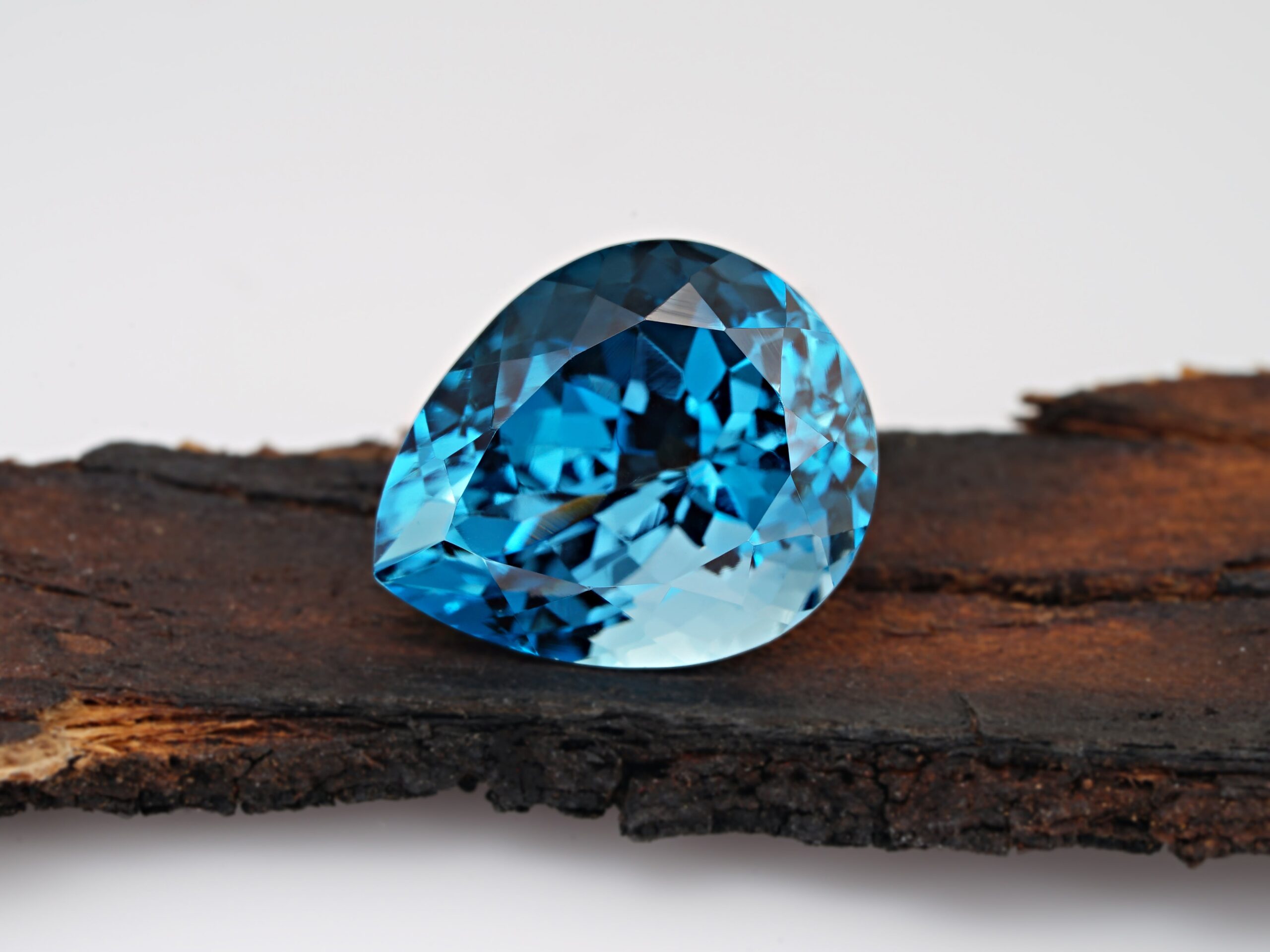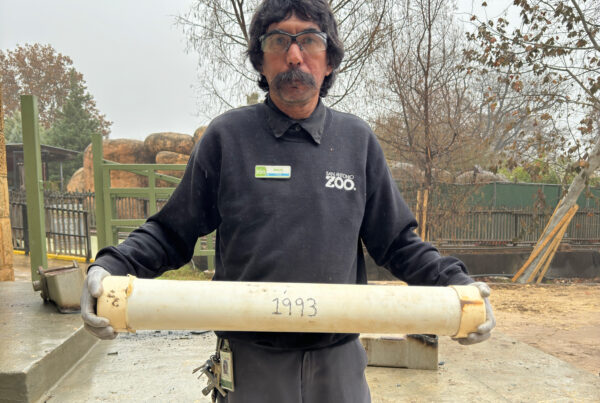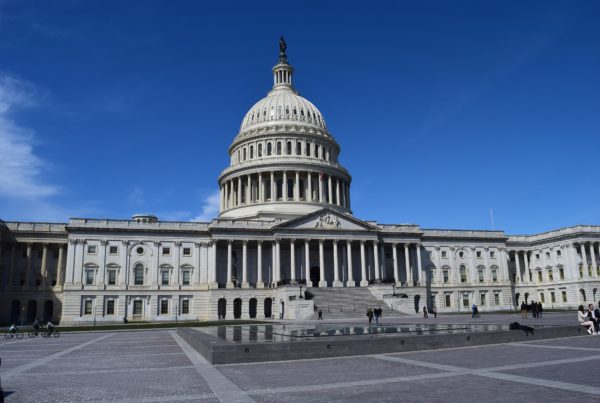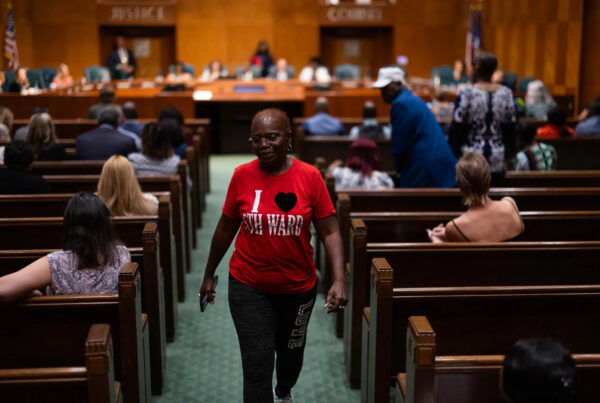It’s Texas’ official state gemstone, and it’s found in the Texas Hill Country. Blue Topaz has been forming in those hills for eons. And up until recently, anyone could go rock hunting for them.
As Dina Gachman writes for Texas Monthly, the last rockhound-friendly ranch in Mason County has closed it’s doors to rock hunters. But that hasn’t stopped her quest to find the light blue gemstone.
Gachman spoke with the Standard on why blue topaz is important to the state and why rock enthusiasts want a piece. Listen to the interview above or read the transcript below.
This transcript has been edited lightly for clarity:
Texas Standard: So tell us real quick about the importance of this stone and why Texas geologists and laypersons, rock enthusiasts and the like, seek out the blue topaz.
Dina Gachman: Well, you know, it is the state gemstone, which I didn’t realize until recently, which I’m ashamed to say.
Topaz itself isn’t that rare. You can find clear or kind of the brownish yellow that people have seen, but to find a sky blue/light blue topaz in the earth is very rare. So it makes it really special.
And you only find it in Texas. You only find it in Mason County. It’s this one specific area. So I think a lot of people in Mason are proud of it. And it just it just makes it special because it’s just in this one area. And the blue color is pretty tough to find.
Well, now I understand that there are hopes that with a new peer reviewed study that just came out, the value of these blue topaz stones could could go up considerably. Could you tell us a little bit more about that and where these high hopes are?
Sure. So blue topaz, there’s commercial mining. I think the main place is Brazil, but you can find blue topaz in Sri Lanka and all over the world and other places in the U.S., too.
But Texas blue topaz specifically, there hasn’t been any way to tell that from, say, Brazilian topaz until this new study that just came out where they’ve been able to identify trace elements. So from the people I talked to, they said it’s not 100% yet, but this is the first like huge step towards being able to say, “okay, this is certified Texas blue topaz.”
So it could become kind of like a label of exclusivity that people might seek out. That’s the, I guess, hope among some of the speculators. So Hill Country ranchers in Mason County used to open their doors to folks wanting to look for topaz, but that is now changed?
It has just recently. Like I said, it’s not commercially mined, which probably is a good thing – to leave the land alone. But there were a couple of private landowners in Mason that would, you know, for a small daily fee, for decades they would just let people get a pass and they’d give them a map, and they could just go out there for fun and look for… you know, there’s topaz, there’s fluorite, there’s all kinds of fun things to find. Quartz.
And then just recently, the Lindsay Ranch, which I think was the last one that was pretty known for letting people do this, decided to not do it anymore. I think I talked to Mrs. Lindsay and she just said, she’s getting older. I think she said she’s in her 80s and her kids just said, “mom, it’s time to move on. It’s a lot of work.”
So it’s their prerogative. But it it does kind of close the door to a lot of rockhounds.
As I understand it, you don’t just write about blue topaz. You have gone on these sorts of excursions to find this stone, right?
I did. I went out with Frank Roberts.
So he is actually an audio engineer, but he is a rockhound, which is just somebody that is just passionate about going out and kind of digging through the gravel and the dirt to find gems. And so he took me and he took my six-year-old son out to Mason. And he still has an agreement with a local rancher, but it’s his own private spot. But he took us out and it was just so much fun.
And I can just see how people get obsessed. I mean, the time flies by. And, you know, we didn’t pull out of, you know, 600-carat hunk of blue topaz, sadly, but we did find a bunch of fun stuff. So I got to experience it and just, you know, understand why people fall in love with just going out there and looking.
You say that you found a bunch of fun stuff. Any blue topaz, perhaps?
I wish. No. We found a very small piece of what I think is clear Texas topaz. But no blue. But there is a huge blue topaz stone at the Mason Museum, the Mason Square Museum. If anybody wants to check it out, it’s pretty cool.
So what does the future of topaz hunting look like for those that are experienced versus the novices who might be listening to us and want to do some digging at their own?
I don’t know, because I know that, like I said, the main ranches have decided not to do it anymore, and that’s their call.
But Diane Eames, who’s a woman I talked to who’s a faceter and she owned a jewelry store out there, she said that there is some public land maybe, you know, could be opened even just a couple times a year to people going out there. Right now, it’s pretty limited. You probably have to have a personal connection.












